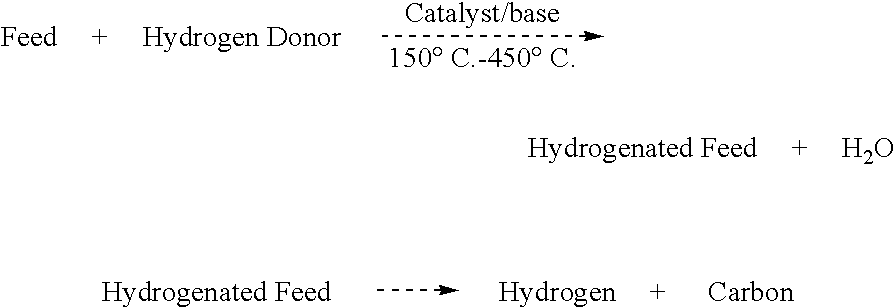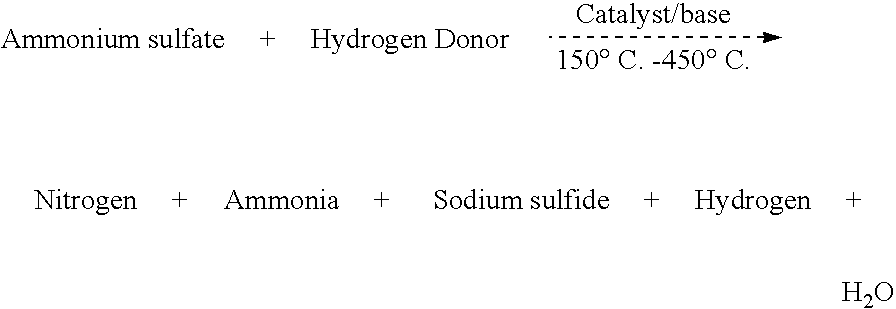Low temperature methods for hydrogen production
a low temperature and hydrogen technology, applied in the field of methods for hydrogen production, can solve the problems of limiting the development of a hydrogen economy, rapid price increase of hydrocarbon feed stocks, supply interruption,
- Summary
- Abstract
- Description
- Claims
- Application Information
AI Technical Summary
Benefits of technology
Problems solved by technology
Method used
Image
Examples
Embodiment Construction
[0009]The present invention is directed to methods for producing hydrogen. More specifically, the present methods employ Catalytic Transfer Hydrogenation (CTH) techniques for the production of hydrogen from various suitable hydrogen-bearing feed materials. The inventive methods employ lower temperatures than many conventional processes and many processes currently under development. The CTH-based methods are conducted at relatively low temperature, i.e., at a temperature in a range of from about 150° C. to about 450° C., and are simple and relatively low cost to operate. The methods produce hydrogen and a solid carbon product from the feed material without release of carbon oxides, or other detrimental oxides, into the environment. Additionally, in accordance with further embodiments of the invention, the carbon residue product may be reacted with water to produce hydrogen by reaction with water. Alternatively, the carbon residue product may be recovered for additional uses or proce...
PUM
| Property | Measurement | Unit |
|---|---|---|
| temperature | aaaaa | aaaaa |
| temperature | aaaaa | aaaaa |
| temperature | aaaaa | aaaaa |
Abstract
Description
Claims
Application Information
 Login to View More
Login to View More - R&D
- Intellectual Property
- Life Sciences
- Materials
- Tech Scout
- Unparalleled Data Quality
- Higher Quality Content
- 60% Fewer Hallucinations
Browse by: Latest US Patents, China's latest patents, Technical Efficacy Thesaurus, Application Domain, Technology Topic, Popular Technical Reports.
© 2025 PatSnap. All rights reserved.Legal|Privacy policy|Modern Slavery Act Transparency Statement|Sitemap|About US| Contact US: help@patsnap.com


